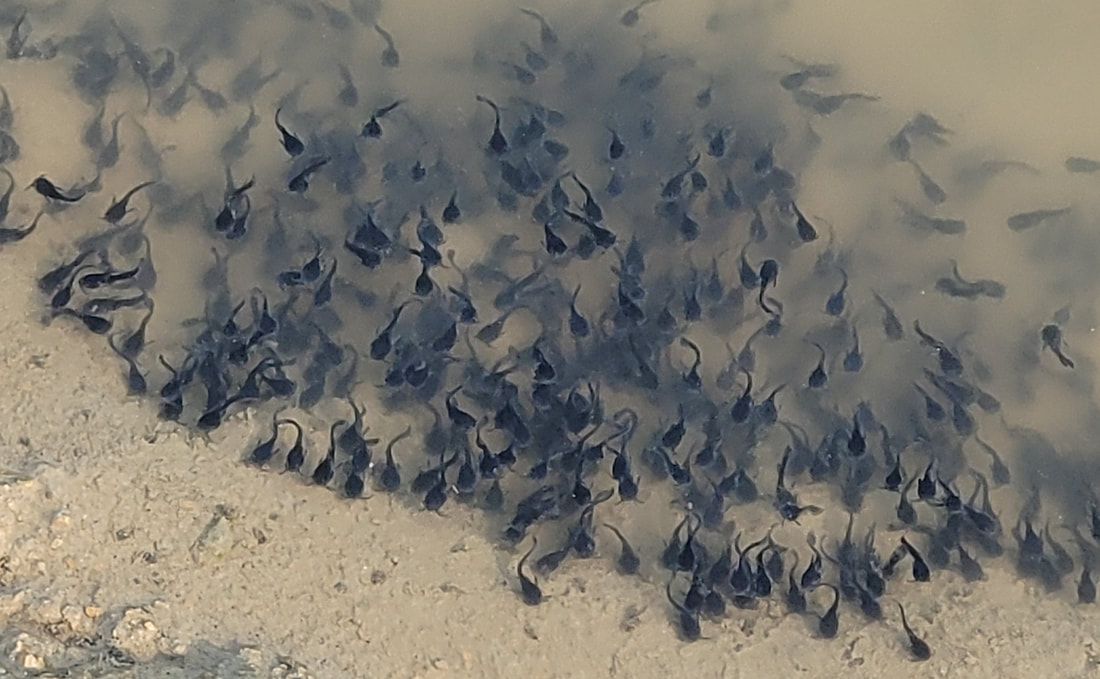 If you follow our Facebook page you will have seen the happenings over the past many months, but I will try to be more diligent to keep things updated here as we move forward ... The pond and wetlands are an amazing testament to Nature's ability to restore a virtually barren area into a lush, green haven. Last year was so dry that almost none of the wildflowers planted ever showed signs of surviving and by the end of summer the pond had shrunk to a couple wee puddles, barely enough for animals to get a drink! The first few days of April this spring saw the Sydenham River rise to the point of breaching the 6-foot bank, spilling over onto the wetland, into the pond and eventually covering about 12 acres of the crop field. Almost unbelievably, the water rose to a depth of at least 4-ft deep above the pond, confirmed by the fact our five trail cameras were totally submerged for a few days! Even more incredulous, all the memory cards were retrieved intact and four of the cameras are still in perfect working condition! If you are interested in seeing what the area looked like at that point, check out the drone video on our YouTube channel youtu.be/wI5Fui6S3D0 As the water receded, a few large fish were caught in the pond and have spawned. I couldn't get a close enough view to know what kind they were, but we suspected carp. A few weeks later, though, I noticed some odd behaviour of what I thought were frog or toad tadpoles near the shore. When I was able to zoom in later on the video I took, we have proof that at least two of those big fish are catfish. Those wee babies have whiskers! A wet spring and continuing rain over the past weeks have kept the pond filled to overflowing onto the intended wetland where marsh flowers have flourished. The rain also allowed the seeds sown last year to finally germinate and grow into an abundance of black-eyed Susans, wild bergamot, several prairie grass species and other lovely wildflowers and plants. Other, not-so-nice plants such as giant ragweed, were able to take advantage of the bare soil and establish themselves, particularly on the east berm, creating a nice looking, but deceptive, green blanket. Even though they have a few redeeming features, including medicinal properties, being a valuable survival food source believed to have been cultivated by Indigenous peoples a few hundred years ago, and having the ability to remove industrial waste and toxins from the soil, ragweed plants are one of the worst pollen producers for allergy/hay fever sufferers and so prolific that they end up taking over to the point of becoming a nuisance. With that in mind, we have employed some local teens to pull these offenders, allowing for a more diversified plant landscape to settle in. Please visit our Facebook page for more pictures and information.
0 Comments
Leave a Reply. |
Thank youThank you for joining us on this adventure! Archives
July 2023
Categories |
 RSS Feed
RSS Feed